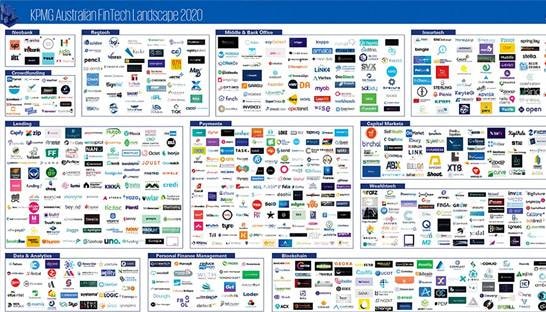Ever been in a tight spot financially? You’re not alone. Running a business is like riding a rollercoaster – ups and downs, twists and turns. One minute you’re on top of the world, the next you’re wondering how you’ll pay the bills. That’s where business cash flow lenders come in.
In this guide we’ll go deep into the world of business cash flow lending in Australia. We’ll cover what these loans are, why you might need one, the pros and cons and how to choose the right lender for you.
So, grab a cuppa and let’s get started..

What is a Business Cash Flow Loan?
Imagine you’re running a food truck business in Melbourne. You’ve got a great menu, a loyal customer base and you want to expand to a second truck. But here’s the problem – your current cash flow isn’t quite enough to fund that expansion. Enter the business cash flow loan.
A business cash flow loan is a short term loan designed to help you manage your daily operations or take advantage of growth opportunities. Unlike traditional loans that are secured against assets, many cash flow loans are unsecured loans, meaning they do not require collateral. This provides speed and flexibility that business owners need, especially when compared to the more stringent requirements of secured loans.
Types of Cash Flow Loans
When it comes to financing options, small businesses in Australia have several types of cash flow loans to choose from, each tailored to meet different needs and circumstances. Here’s a closer look at some of the most common types:
- Short-term Loans: These loans are perfect for businesses needing a quick influx of cash to cover unexpected expenses or seize new opportunities. With repayment terms typically ranging from three to 18 months, short-term loans provide the flexibility to address immediate financial needs without long-term commitments.
- Business Lines of Credit: Think of this as a financial safety net. A business line of credit offers a revolving credit line that you can draw from as needed, making it ideal for managing ongoing cash flow. Whether you need to cover payroll during a slow month or purchase inventory for a busy season, a line of credit can provide the necessary funds.
- Invoice Financing: If your business has a large number of outstanding invoices, invoice financing can be a game-changer. This type of loan allows you to borrow against your unpaid invoices, giving you quick access to cash without waiting for clients to pay. It’s a great way to maintain liquidity and keep operations running smoothly.
- Merchant Cash Advances: For businesses with a high volume of credit card sales, a merchant cash advance can provide a lump sum of cash that’s repaid directly from future sales. This option is particularly useful for retail and hospitality businesses that need to manage cash flow fluctuations.
By understanding the different types of cash flow loans available, you can choose the one that best fits your business needs and financial situation.
How Cash Flow Loans Work
Cash flow loans are designed to provide businesses with a quick and flexible source of funding. Here’s a closer look at how they work:
When you apply for a cash flow loan, the lender will assess your business’s financial health, focusing on your revenue and cash flow rather than traditional credit scores. This makes cash flow loans accessible to businesses that might not qualify for traditional loans.
Once approved, you’ll receive a lump sum of cash, which you can use to cover unexpected expenses, invest in growth opportunities, or manage day-to-day operations. Repayment terms typically range from three to 18 months, with interest rates varying based on the lender and the type of loan.
To qualify, you’ll need to provide financial statements, sales projections, and other relevant documents. The lender will use this information to determine how much you can borrow and the terms of the loan.
Cash flow loans offer a quick and efficient way to access the funds you need, helping you keep your business running smoothly and take advantage of new opportunities as they arise.

What are Business Cash Flow Loans For?
Now that we’ve covered the ‘what’, let’s talk about the ‘why’. Why would an Aussie business owner like you consider a cash flow loan? Well, there are a few reasons:
Managing cash flow is crucial for small businesses, as it can be a significant source of stress. A cash flow loan can serve as a buffer against unexpected financial challenges, ensuring the smooth operation of your business.
- Managing Seasonal Fluctuations: If you run a beach bar in the Gold Coast, you might need extra cash to stock up before summer.
- Covering Unexpected Expenses: Maybe your delivery van breaks down in the middle of the Nullarbor Plain. A cash flow loan can get you back on track.
- Taking Advantage of Growth Opportunities: That second food truck we mentioned earlier? A cash flow loan can help you expand your fleet.
- Bridging Invoice Gaps: If you’re a B2B business waiting on payment from clients, a cash flow loan can keep the lights on in the meantime.
- Inventory Purchases: Need to buy stock in bulk to meet an increase in demand? A cash flow loan can fund that.
- Hiring New Staff: As your business grows you might need to bring on new staff before you have the cash flow to survive and thrive.
- Marketing and Advertising: Sometimes you have to spend money to make money. A cash flow loan can fund a new marketing campaign for your business.
Business Cash Flow Loans: The Pros and Cons
Like any financial product, cash flow loans have their advantages and disadvantages. Here they are:
Pros:
- Fast Access to Funds: Unlike traditional loans that can take weeks or even months to process, cash flow loans can be approved a
- Flexibility: Cash flow loans can be used for any business purpose, so you can address your most urgent needs.
- Less Rigorous Requirements: These loans have more lenient qualification criteria than traditional bank loans, so they’re available to newer businesses or those with imperfect credit.
- No Collateral Required: Many cash flow loans are unsecured loans, so you don’t have to put up valuable business assets as collateral.
- Can Help Build Business Credit: Paying on time with a cash flow loan can improve your business credit score, so you’ll have better financing options.
Cons:
- Higher Interest Rates: The convenience and speed of cash flow loans comes at a cost – higher interest rates than traditional loans.
- Shorter Repayment Terms: These loans have shorter repayment periods, so higher regular repayments.
- Debt Cycle: If not managed properly, the ease of these loans can lead to a debt cycle.
- Personal Guarantee May Be Required: While the loan doesn’t require collateral, the lender may ask for a personal guarantee, so you’re personally liable if the bus
- Cash Flow: Regular repayments can affect your ongoing cash flow if business doesn’t pick up as expected.
Business Cash Flow Lenders in Australia
When it comes to cash flow lending in Australia, you’ve got a few options. Some lenders offer unsecured loans, which do not require collateral, making them accessible to more businesses. Here are the players:
1. Traditional Banks
The big four banks (Commonwealth Bank, Westpac, ANZ, and NAB) and other established banks offer cash flow lending products. They’re the old guard – respected but sometimes slow and hard to work with.
Pros:
- Lower interest rates
- Established reputation and regulatory oversight
- Can build a long term banking relationship
Cons:
- More stringent eligibility criteria
- Longer application and approval process
- May require collateral or more documentation
2. Online Lenders and Fintechs
These are the newbies, using technology to simplify the lending process. Think Prospa, Moula or OnDeck.
Pros:
- Fast application and approval
- More flexible criteria
- Products tailored to your business needs
- Many online lenders and fintechs offer unsecured loans, which do not require collateral
Cons:
- Often higher interest rates
- Usually shorter loan terms
- Less personal relationship with the lender

3. Peer-to-Peer (P2P) Lenders
P2P platforms connect businesses with investors.
Pros:
- Lower interest rates than some online lenders
- Businesses can tell their story to investors
- Good for businesses that don’t meet traditional banking criteria
Cons:
- Funding not guaranteed – it depends on investor interest
- May still have strict eligibility criteria
- Less regulated than other lending types.
5. Invoice Financing Companies
Not strictly cash flow lenders but companies like Scottish Pacific offer invoice financing which can serve a similar purpose. Invoice financing is a useful tool for managing cash flow by providing quick access to cash tied up in unpaid invoices.
Pros:
- Access cash tied up in unpaid invoices
- Improve cash flow without debt
- Quicker and easier to get than traditional loans
Cons:
- More expensive than traditional financing
- Can impact customer relationships if not managed well
- Not for all business types
Cash Flow Management Strategies
Effective cash flow management is crucial for maintaining liquidity and meeting your financial obligations. Here are some strategies to help you manage your cash flow more effectively:
- Monitor and Analyze Cash Flow: Regularly review your cash flow statement to identify trends and patterns. This will help you anticipate periods of cash surplus or deficit and make informed financial decisions.
- Optimize Inventory: Efficient inventory management can free up cash tied up in unsold goods. Techniques like just-in-time inventory and demand forecasting can help you maintain optimal inventory levels and improve cash flow.
- Manage Accounts Receivable and Payable: Effective management of accounts receivable and payable is vital for maintaining healthy cash flow. Offer discounts for early payments and negotiate favorable payment terms with suppliers to improve your cash position.
- Secure Financing: Having access to adequate financing can help you manage cash flow more effectively. Options like lines of credit, business loans, and factoring can provide quick access to cash when you need it.
By implementing these strategies, you can maintain a healthy cash flow and ensure your business remains financially stable.

Analysing Cash Flow with a Cash Flow Statement
A cash flow statement is a vital financial document that shows the inflows and outflows of cash and cash equivalents over a specific period. Analyzing this statement can provide valuable insights into your business’s financial health and operational efficiency. Here are the key components:
- Operating Cash Flow: This section shows the cash generated from your core business operations. It includes cash receipts from sales and cash payments for expenses. Positive operating cash flow indicates that your business is generating enough cash to cover its operating expenses.
- Investing Cash Flow: This section details cash transactions related to buying and selling assets, such as equipment or property. Investing cash flow can provide insights into your business’s investment activities and long-term growth potential.
- Financing Cash Flow: This section includes cash transactions involving debt, equity, and dividends. It shows how your business is financing its operations and growth, whether through loans, issuing shares, or paying dividends.
By analyzing these components, you can identify trends and patterns in your cash flow, helping you make informed decisions about your financial management and future investments.
Growing Your Business with Cash Flow
Effective cash flow management is not just about keeping the lights on; it’s also a powerful tool for growth. Here are some ways you can use cash flow to expand your business:
- Invest in New Equipment or Technology: Upgrading your equipment or investing in new technology can increase efficiency and productivity, helping you stay competitive and meet growing demand.
- Hire New Staff: As your business grows, you may need to bring on new employees to support your operations. Using cash flow to hire and train new staff can help you scale your business and increase revenue.
- Expand into New Markets: Exploring new markets can open up additional revenue streams. Use your cash flow to fund market research, marketing campaigns, and the initial costs of entering new markets.
- Develop New Products or Services: Innovation is key to staying competitive. Use your cash flow to develop and launch new products or services that meet the evolving needs of your customers.
By leveraging your cash flow effectively, you can invest in growth initiatives that drive your business forward and help you achieve your long-term goals.

How to Choose Your Business Cash Flow Lender
Choosing the right lender is like choosing a business partner – you want someone who gets you, fair terms and won’t leave you high and dry. Here’s 10 things to consider:
- Interest Rates and Fees: Sounds obvious, but compare the total cost of the loan including all fees and charges. A low interest rate doesn’t always mean it’s the best deal if it comes with high fees.
- Loan Terms: How long will you have to repay the loan? Shorter terms means higher repayments but less interest overall. Longer terms means lower repayments but more interest long term.
- Repayment Flexibility: Can you make extra repayments without penalty? Can you repay the loan early? These can save you money if your c
- Approval Speed: If you need funds fast, the speed of approval and funding is key. Some online lenders can provide funds within 24 hours, traditional banks weeks.
- Eligibility Criteria: Make sure you meet the lender’s criteria before applying. Multiple loan applications can hurt your credit score.
- Customer Service: Good customer service is invaluable especially if you run into issues. Look for lenders with a good reputation for customer support.
- Technology and User Experience: If you like to manage your finances online look for lenders with a user friendly website.
- Secured or Unsecured: Do you want to secure the loan against business assets? Secured loans often have better rates but put your assets at risk. Unsecured loans do not require collateral, which can be beneficial for businesses with varying credit ratings.
- Reputation and Reviews: Check out what other business owners are saying. Look for reviews on independent sites not just testimonials on the lender’s website.
- Future Borrowing Potential: Can the lender offer other products you might need in the future. Building a relationship with a lender can be good for future financing needs.
Remember the right lender for you will depend on your business situation, financial needs and future plans. It’s worth taking the time to shop around and even consult with a financial advisor or broker before you decide.
Conclusion
Choosing a business cash flow lender can be overwhelming but with the right info you can make a decision that sets your business up for success. Whether you need to smooth out seasonal fluctuations, take advantage of a growth opportunity or just bridge a short term cash gap there’s a cash flow shortfall.
Remember these loans are not a magic wand. You need to have a plan for how you’ll use the funds and how you’ll repay the loan. Used wisely a business cash flow loan can be the kickstart your business needs to take off.
So whether you’re a busy café in Sydney, a tech startup in Melbourne or a family farm in the outback, know there are options out there to help you manage your cash flow.

Common questions answered
To help you further with business cash flow lending we’ve put together a list of FAQs. These should help clear up any doubts and give you even more info.
Q1: What’s the difference between a business cash flow loan and a traditional business loan?
A: The main differences are in the approval process, collateral requirements and repayment terms. Business cash flow loans are based on your company’s projected future income rather than assets or credit history. They’re faster to get, more flexible requirements and shorter terms than traditional loans but often higher rates.
Q2: What documents do I need to apply for a business cash flow loan?
A: While this can vary between lenders you’ll need to provide:
- Business bank statements (usually for the last 3-6 months)
- Tax returns and financial statements
- Proof of time in business
- Business registration documents
- Photo ID of business owners
Some lenders may also ask for a business plan or cash flow projections.
Q3: How long does it tak
A: The time frame can vary greatly between lenders. Online lenders and fintech companies can give you a decision in hours and funding in 1-2 business days. Traditional banks can take weeks for the whole process.
Q4: Can I get a business cash flow loan if I have bad credit?
A: Yes you can. Many cash flow lenders put more emphasis on your business’s revenue and cash flow rather than your credit score. But a bad credit history can mean higher interest rat
Q5: How much can I borrow with a business cash flow loan?
A: Loan amounts can be from a few thousand to several hundred thousand depending on your business’s revenue, cash flow and the lender’s policies. Many lenders offer from $5,000 to $500,000 or more.
Q6: Are business cash flow loans secured or unsecured?
A: Both. Many cash flow loans are unsecured meaning no specific collateral is required. Some lenders may require a personal guarantee.
Q7: How do repayments work for business cash flow loans?
A: Repayment structures can vary. Some lenders want daily or weekly repayments, others monthly. Some may also offer to repay a percentage of your daily credit card sales.
Q8: Can startups get business cash flow loans?
A: It can be tough for very new businesses to qualify for cash flow loans as lenders want to see a revenue history. But some lenders specialise in startup financing and may offer options based on
Q9: How will a business cash flow loan affect my taxes?
A: Interest paid on business loans is generally tax deductible as a business expense. But always consult with a qualified accountant or tax professional for advice specific to your situation.
Q10: What happens if I can’t repay my business cash flow loan?
A: The consequences are severe. You may face late fees, damage to your credit score, legal action and if you’ve provided a personal guarantee your personal assets could be at risk. Always talk to your lender if you’re having trouble making repayments – they may be able to offer alternative options.
Q11: Are there other options besides business cash flow loans?
A: Yes there are several depending on your situation:
- Business credit cards
- Invoice financing
- Equipment financing
- Merchant cash advances
- Business lines of credit
- Crowdfunding
- Angel investors or venture capital
Q12: How do business cash flow loans work for seasonal businesses?
A: Cash flow loans can be great for seasonal businesses. Some lenders offer flexible repayment terms that match your business cycles so you can make bigger payments during peak seasons and smaller payments during slow periods.
Q13: Can I get a business cash flow loan if I’m already in debt?
A: Yes but it depends on your current debt levels, revenue and overall financial health. Lenders will want to make sure taking on more debt won’t overwhelm your business. They’ll look at your debt-to-income ratio and your ability to repay.
Q14: How do I increase my chances of getting approved for a business cash flow loan?
A: To increase your chances:
- Make sure your financial records are up-to-date
- Improve your business credit score
- Have a clear plan for how you’ll use and repay the loan
- Consider offering some form of security if possible
- Shop around and compare different lenders
- Consider working with a loan broker who knows your industry
Q15: Are there any industry restrictions for business cash flow loans?
A: While many industries can qualify for cash flow loans, some lenders may have restrictions on certain high risk or heavily regulated industries. These may include gambling, adult entertainment or cannabis related businesses. Always check with the lender about any industry specific products.
Every business is different so what works for one won’t work for another.
Our team can help you find the best cash flow lending options – just ask!

